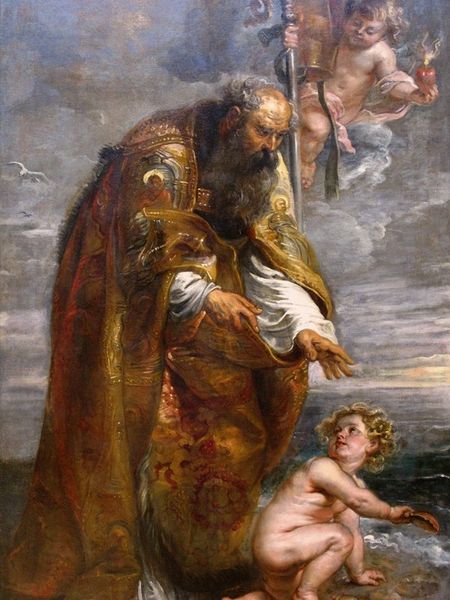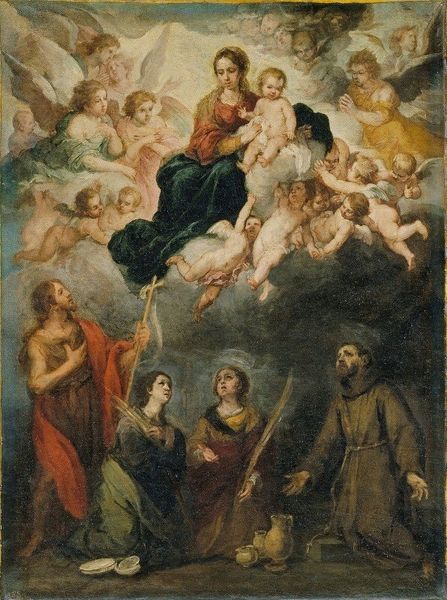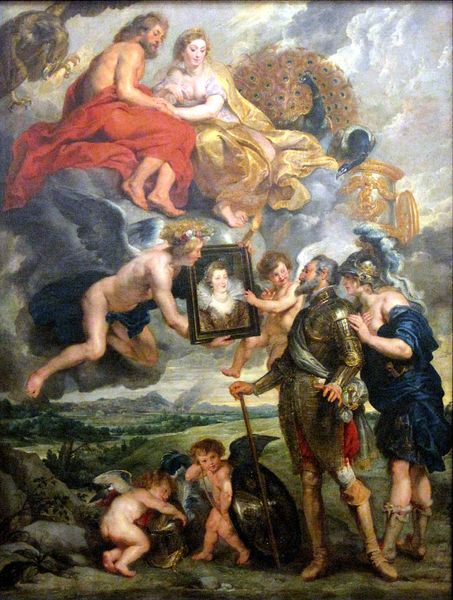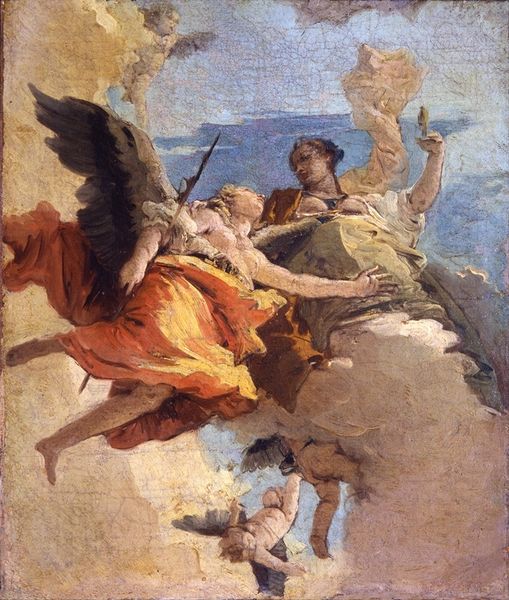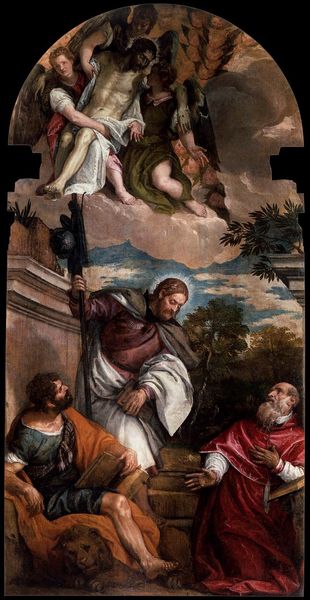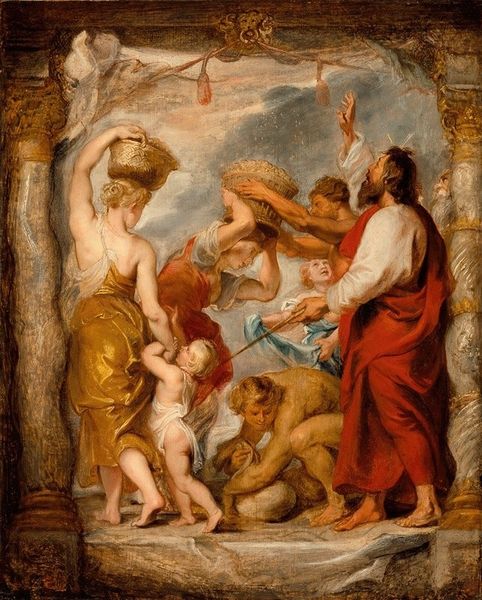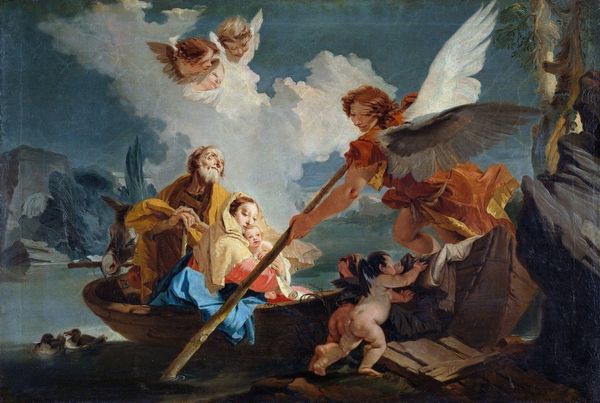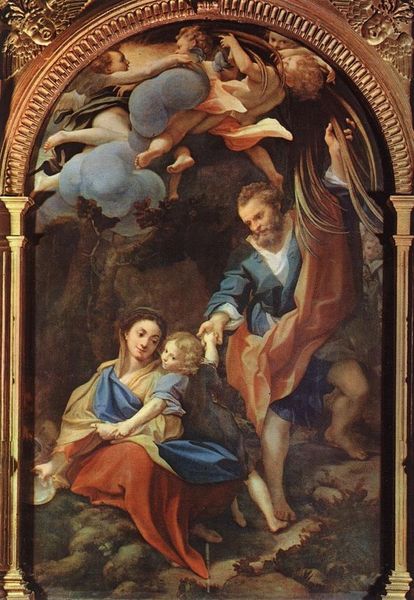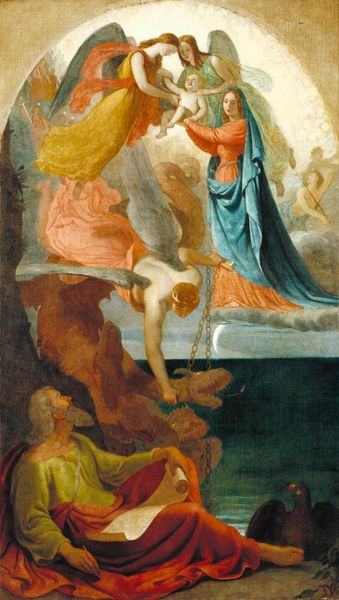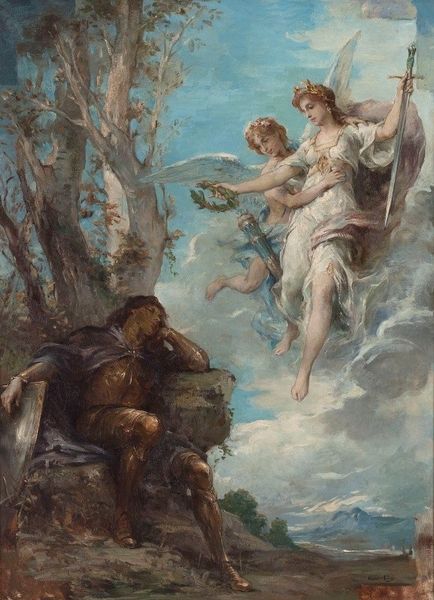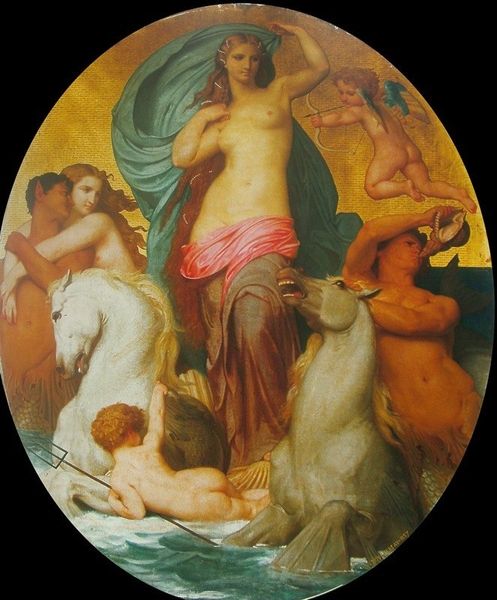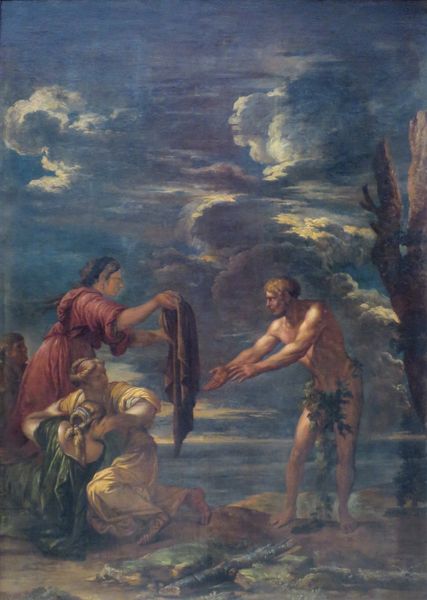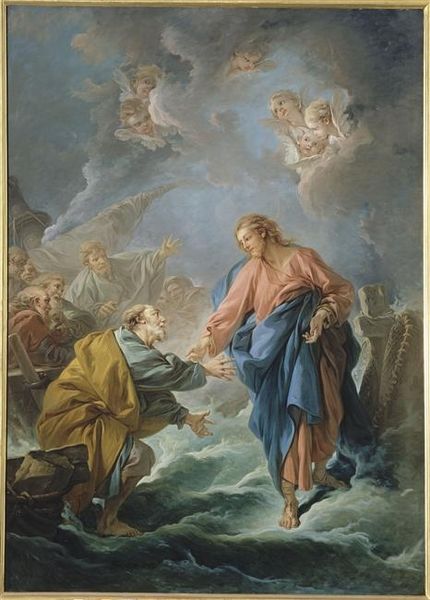
painting, oil-paint
#
figurative
#
baroque
#
painting
#
oil-paint
#
figuration
#
oil painting
#
history-painting
Copyright: Public Domain: Artvee
Editor: So, this is "Constantius Appoints Constantine As His Successor" by Peter Paul Rubens, painted in 1622. It strikes me as both chaotic and divine, the brushstrokes so free, and that angel is breathtaking. What do you see in this piece? Curator: It's a potent blend of history and allegory, isn't it? Note the symbols employed to legitimize power: The globe represents worldly dominion being passed, an angel with a laurel wreath of victory descending from the heavens…these aren't mere aesthetic choices. Editor: Absolutely! That globe is weighty. Does the figure slumped at the bottom have a specific meaning? Curator: The figure slumped may represent a vanquished rival or the subjugated lands, weighed down as new power ascends. Note, too, how Rubens uses light—divine light illuminating Constantine while others are shadowed, implying providence and a sanctioned right to rule. Editor: It's interesting how the heavenly and the earthly are interwoven so seamlessly. So the symbols aren't just decorative but integral to understanding the power dynamics depicted. Curator: Precisely. Every element—the armour, the gestures, even the flowing robes—contributes to this visual argument about legitimacy. Consider where Rubens situates each figure and what they wear. Even colour tells a story. What might that colour be in this piece? Editor: The colours definitely set a contrast, earthy tones compared to the shimmering angel above, this juxtaposition emphasises earthly and divine will! Curator: It makes you think about how visual culture is constructed and how artists participate in shaping historical narratives, doesn't it? Editor: It certainly does. I am leaving with a new found respect for visual symbolism! Thank you for such an insightful breakdown.
Comments
No comments
Be the first to comment and join the conversation on the ultimate creative platform.
